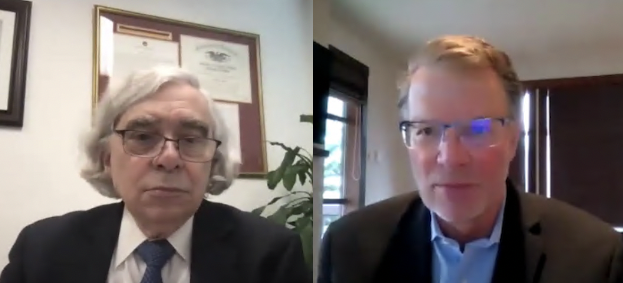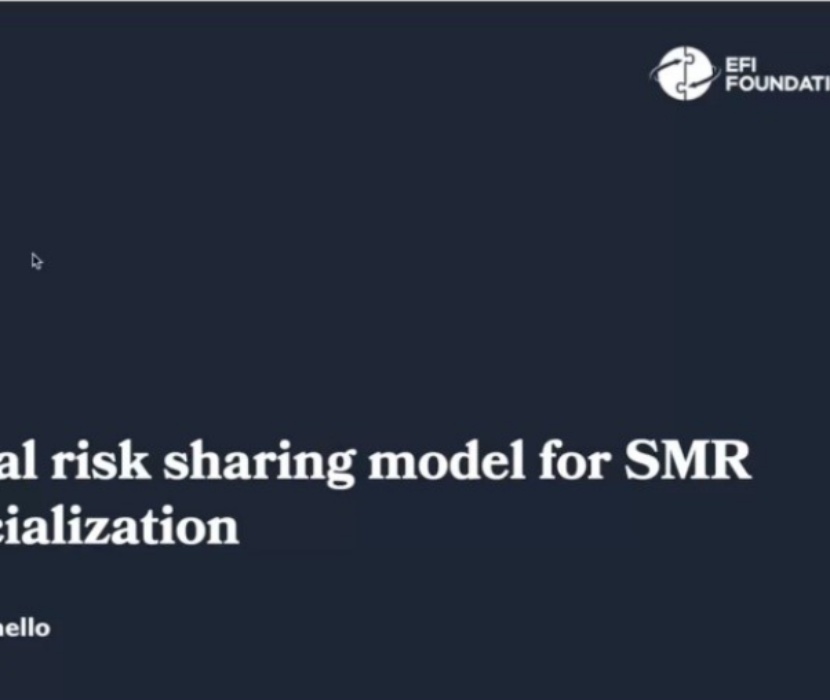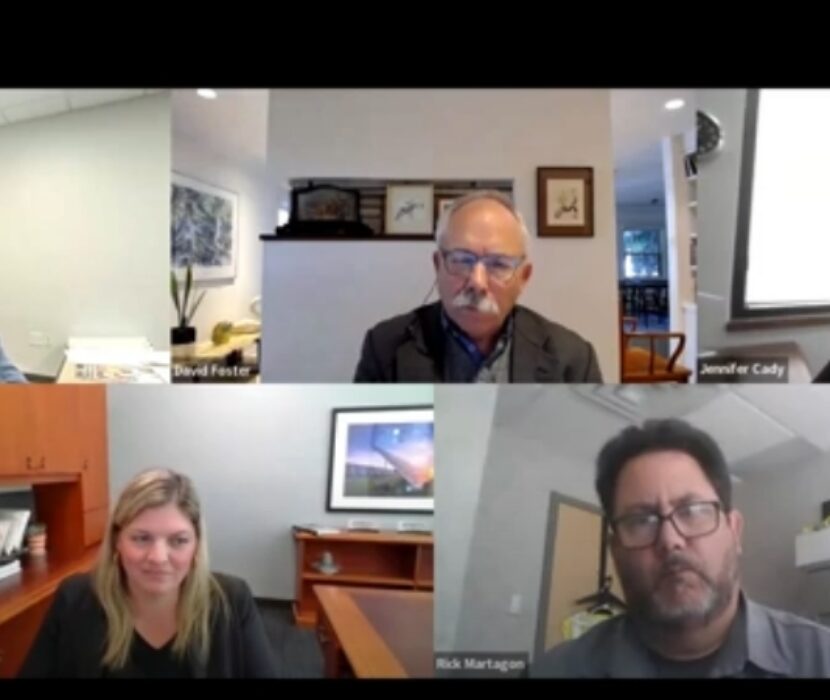
Speakers (Left to right): Ernest J. Moniz (EFI Foundation) and Jeffrey D. Brown (EF3, EFI Foundation)
On April 11, 2024, the EFI Foundation (EFIF) hosted a webinar to preview new analysis on how the United States can plan and pay for transmission capacity to modernize its electricity grid for resilience, load growth, and the clean energy transition. The event featured insights from Ernest J. Moniz, EFIF CEO and former Secretary of Energy, and Jeffrey D. Brown, Managing Director of EFIF’s Energy Futures Finance Forum (EF3). They discussed necessary upgrades and strategies to support unprecedented burgeoning energy demand while facilitating the transition to clean energy.
Opening the event, Moniz said robust transmission capacity is critical to secure electricity that is reliable, affordable, and clean. He stressed the importance of proactive, strategic planning to address both rapid advancements in technology and escalating energy demand.
“Adequate transmission capacity is critical,” Moniz stated.
He highlighted the need for new infrastructure to be available in a timely manner to meet these challenges.
Moniz pointed out one main issue with U.S. grid infrastructure: extensive interconnection queues. Before connecting to the grid, projects need to go through a process (a queue) to determine what new transmission equipment or upgrades are needed. These lengthy queues are delaying the integration of new energy sources onto the grid. Yet, he noted that the interconnection queue is a symptom of a lack of transmission capacity.
Moniz and Brown discussed new analysis from EF3 on how to tackle regulatory and financial hurdles that block private capital flows into clean energy projects.
“EF3 focuses on the investment quality of decarbonization, identifying policy barriers to large-scale private investment flows, and then making recommendations to eliminate or at least reduce those barriers,” Moniz explained.
Brown said electricity load growth poses a challenge for transmission planning and cost allocation in regions across the United States. He noted that demand is increasing due to AI-driven data centers, advancements in manufacturing capabilities within the clean energy sector, and the widespread electrification of transportation and heating systems. He explained the challenges of managing unpredicted electricity demand growth on the path to net-zero emissions and the importance of strategic, forward-looking planning to support this transition.
“Over the next decade, we’re going to need to add more electric generation than currently produced by all of Texas,” Brown remarked, pointing to the massive grid expansion needed to manage this growth effectively. “Today we spend about 20 to 25 billion a year on transmission, that’s going to have to double conservatively.”
Moniz emphasized the need for long-term, proactive planning and equitable, cost-sharing mechanisms.
“Even if one decides that a transmission line is needed, then comes the question of who pays for it,” Moniz said. “Our costs should be allocated in a fair and equitable way.”
Brown elaborated on the potential of new technologies and the need for innovative approaches to plan and deploy grid infrastructure. He said a modernized grid would support clean energy initiatives and enhance economic growth and stability. Brown advocated for an integrated approach to national energy policy and stressed the importance of states and utilities cooperating to plan and finance these critical infrastructure projects.
“These new plans are going to require a lot more coordination, collaboration, and transparency than in the past,” Brown said.
Both speakers addressed the need for supportive legislative and regulatory frameworks to enable these transformations. They highlighted the critical roles of the Federal Energy Regulatory Commission (FERC), the U.S. Department of Energy (DOE), and the U.S. Congress in shaping the future of the national grid.
Moniz and Brown discussed the implications of FERC’s forthcoming actions and potential rule changes on regional transmission planning and cost allocation, and said that they could significantly impact the landscape. Moniz noted that one goal of EFIF’s analysis was to help FERC implement a strong transmission planning rule and to encourage FERC to “make adoption of best practices a requirement.”
“Physically, a robust system needs lots of backup routes for power flow,” Brown said. “And politically to get generate consensus you have to spread the wealth and the benefits.”
Regarding DOE and Congress, Moniz and Brown emphasized their crucial support to increase grid reliability through technical and financial assistance, respectively.
“DOE also has through its programs, through its national labs, etc, considerable technical resources,” Moniz said. “It’s going to require a new generation really to have some of those technical resources to do the planning adequately for the future, and therefore, make sound cost allocation decisions.”
“On Congress, a 30% investment tax credit was available or may in the original build back better plan,” Brown said. “It was taken out in the IRA percent investment tax credit, especially if it were on the direct pay basis would really help to lower risks and ease ratepayer shock.
In closing, Moniz reiterated the need for decisive action and innovative solutions.
“The urgency is one that simply cannot be turned away from,” Moniz concluded.
-Dan Selby, Communications Intern
(Share this post with others.)




